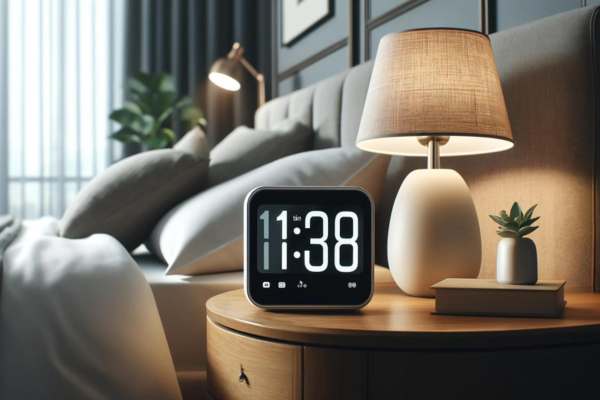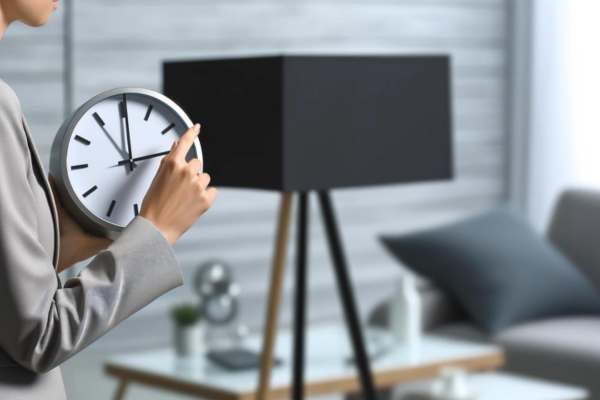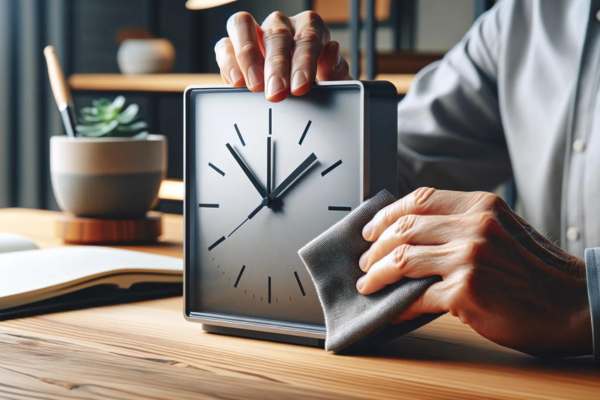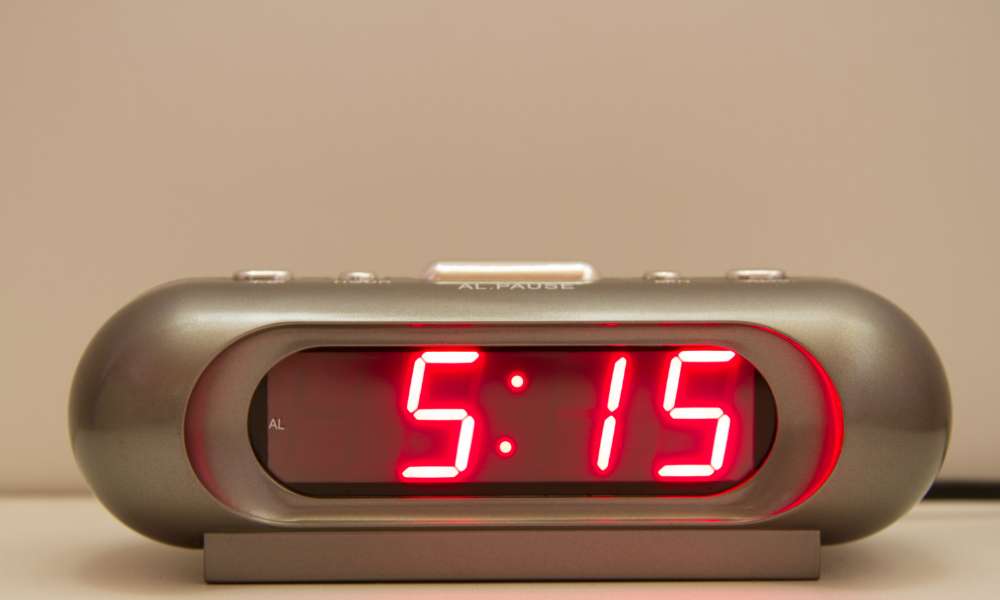In our digital age, where precision and punctuality play critical roles in our daily routines, setting your digital clock accurately is more than a mere convenience—it’s a necessity. From waking up on time to catching your next appointment or flight, the reliability of your digital clock impacts many aspects of life. However, the plethora of buttons and settings can make this simple task daunting for many. This guide demystifies the process, specifically focusing on How to Set a Digital Clock With 5 Buttons.
Whether you’re setting up a new device or adjusting an old one, this article provides a comprehensive step-by-step approach to ensure your digital clock keeps time perfectly, every time. Join us as we explore how to effectively use those five buttons to set and maintain your clock, ensuring you stay on schedule effortlessly.
Understanding Your Digital Clock

Digital clocks, a ubiquitous presence in homes and offices, come equipped with a variety of features that cater to everyday needs. Typically, these clocks display time in a 12 or 24-hour format and often include additional functionalities like alarms, timers, and sometimes even temperature readings. The core of operating these clocks lies in mastering their buttons, usually numbered at five—Hour, Minute, Second, Set, and Mode. The Hour and Minute buttons allow for basic time setting, adjusting the hours and minutes respectively.
The Second button is used to reset or adjust the seconds, helping synchronize the time more precisely. The Set button usually serves as a confirmation key, saving any adjustments made. Lastly, the Mode button switches between different functions, enabling you to set alarms, change the time display, or access other features. Understanding the specific role of each button is the first step toward making the most of your digital clock’s functionalities.
Preparing to Set the Clock

Before diving into the setting process of your digital clock, some essential preliminaries must be addressed to ensure a smooth and accurate setup. Start by checking the battery life; a weak or dying battery can affect the clock’s functionality and accuracy, leading to time discrepancies or complete resets. Ensure that the clock is operational by checking its display and responsiveness to button presses. It’s also crucial to arm yourself with the correct time zone information, especially if you live in an area that observes daylight saving changes, or if the clock has been moved from one time zone to another. Best practices include having a reliable source to verify the current time, such as a timekeeping website or a synchronized mobile device. This preparation ensures that once you begin setting your clock, the process will be efficient and the results reliable.
Step-by-Step Guide to Setting the Clock

Entering Setup Mode
To begin setting your digital clock, first enter the setup mode, typically accessed through the Mode button. Press and hold the Mode button for a few seconds until the display indicates you are in setup or adjustment mode, often signaled by a flashing display or a specific icon appearing. In some models, you might need to press the Mode button repeatedly until you cycle through the various functions and reach the settings option. Once in setup mode, the clock is ready for time adjustments. It’s important to familiarize yourself with your clock’s specific model instructions as the process can vary slightly between different brands or types of digital clocks. This mode is the gateway to customizing not just the time, but also setting alarms, adjusting brightness, and other customizable features.
Setting the Hour

Setting the hour on your digital clock is a straightforward process that begins by ensuring your clock is in the correct setting mode. First, locate and press the ‘Mode’ button repeatedly until the hour digits begin to blink, indicating that you are in the correct setting mode. Next, use the ‘Hour’ button to adjust the hours. Each press will increase the hour by one; continue pressing until you reach the desired hour. For clocks with AM/PM features, continue cycling through the hours until the correct part of the day is displayed alongside the hour.
If you overshoot the desired time, most digital clocks allow you to either keep pressing the ‘Hour’ button to cycle through 12 hours again or press a separate ‘Decrement’ button if available, to step backwards. After setting the hour correctly, press the ‘Set’ button to confirm and proceed to adjust the minutes. Alternatively, depending on your clock, the device might automatically move to the next setting option.
Setting the Minute

Setting the minute on your Set a Digital Clock With 5 Buttons is a straightforward process, critical for ensuring your time is accurate down to the exact minute. Begin by pressing the ‘Mode’ button repeatedly until the clock display enters the time setting mode, usually indicated by a flashing digit. Once in this mode, locate and press the ‘Minute’ button to adjust the minutes. Each press will increment the minute by one, and typically holding the button down will cause the minutes to advance rapidly, allowing for quicker adjustments.
If you overshoot the desired time, simply continue pressing until it cycles back to the correct minute. After setting the minutes to the correct time, press the ‘Set’ button to save your changes, ensuring that your clock reflects the precise time you intend. This method allows for minute adjustments to be made easily and efficiently, ensuring your clock’s accuracy throughout its use.
Adjusting Seconds (if applicable)
Adjusting the seconds on your digital clock is a fine-tuning step that enhances its accuracy, crucial for tasks requiring precise time management. To begin, locate the ‘Second’ button, which might be shared with another function, often indicated by dual labels. Press this button, usually found in a sequence after entering the time set mode via the ‘Mode’ or ‘Set’ button. In many clocks, pressing the ‘Second’ button will reset the seconds to zero, which is particularly useful for synchronizing your clock with a standard time signal. If your clock allows, you can also manually adjust the seconds by pressing the ‘Second’ button repeatedly or holding it down to advance quickly. Adjust at the top of a minute to ensure your clock starts counting seconds from zero as a new minute begins, providing the most accurate and precise timekeeping.
Troubleshooting Common Issues
Troubleshooting common issues Set a Digital Clock With 5 Buttons can often resolve frustrations that seem complex at first glance. If you encounter difficulties entering setup mode, double-check the user manual as the process can vary significantly between models. Sometimes, holding the ‘Set’ or ‘Mode’ button for a few seconds longer is necessary. If your clock fails to save the settings you enter, ensure that the battery is fully functional and securely placed, as power interruptions could cause the clock to revert to default settings.
For unresponsive buttons, a soft reset—if available on your model—can be effective. This typically involves removing the battery for a minute and then reinstalling it, which can help clear any temporary glitches in the system. Additionally, make sure the buttons are clean and free from dust or debris that could hinder their functionality. These simple steps can often restore full operation without needing professional repair.
Maintaining Your Digital Clock

Maintaining your digital clock is key to ensuring its longevity and accuracy over time. Regular maintenance should include cleaning the device with a soft, dry cloth to prevent dust accumulation, which can interfere with button functionality and screen clarity. Avoid using harsh chemicals or water, which could damage the internal components. Battery health is critical; replace the batteries annually or as soon as you notice any lag in timekeeping or dimming of the display, even if the clock continues to function. This preemptive approach prevents unexpected resets and time inaccuracies. Additionally, keep the clock away from extreme temperatures and direct sunlight, as these can affect its operations and fade its display. Following these simple care guidelines will keep your digital clock running smoothly and dependably.
Final Thought
Setting your digital clock with precision involves several key steps: understanding the functions of each button, preparing adequately by checking the battery and having the correct time information, and following a detailed step-by-step process to adjust hours, minutes, and seconds. We also explored troubleshooting common issues such as entering setup mode and dealing with unresponsive buttons, as well as how to maintain your clock for optimal performance and longevity. While mastering these basics is essential, don’t hesitate to explore the additional features your digital clock may offer, such as setting alarms, timers, or even connecting to other devices. Embracing these functionalities can enhance your daily routines and make the most out of your Set a Digital Clock With 5 Buttons.

